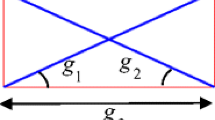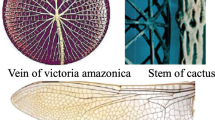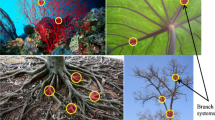Abstract
A bio-soft computing method with fixed-length DNA to solve a group control optimization problem is presented in this paper. In the example of a multi-elevator dispatching problem, fixed-length DNA strands are used in representing the nodes and costs, where the costs are varied by the melting temperature of DNA strands. The optimal solution to a 6-story 2-elevator dispatching problem is searched by biochemical techniques based on the thermodynamic properties of designed DNA strands. This research has shown the potential of bio-soft computing solving the engineering applications, and could be implemented in the future bio-systems.
Similar content being viewed by others
References
Adleman L (1994) Molecular computation of solutions to combinatorial problems. Science 266:1021–1024
Coello CA, Van Veldhuizen DA, Lamont GB (2002) Evolutionary algorithm for solving multi-objective problems. Kluwer, New York
Fujino A, Tobita T, Segawa K, Yoneda K, Togawa A (1997) An elevator group control system with floor-attribute control method ad system optimization using genetic algorithms. IEEE Trans Ind Electron 44(4):546–552
Gehani A, Reif JH (1999) Microflow bio-molecular computation. Biosystems 52(1–3):197–216
Imasaki N, Kubo S, Nakai S, Yoshitsugu T, Kiji JI, Endo T (1995) Elevator group control system tuned by a fuzzy neural network applied method. In: Proceedings of the 1995 IEEE international conference on fuzzy systems, vol 4, pp 1735–1740
Jeng DJF, Watada J, Kim I (2005) Solving a real time scheduling problem based on DNA computing. In: Proceedings of the international conference on intelligent technologies and applied statistics, Taipei Taiwan, pp 317–322
Kim C, Seong K, Lee-Kwang H, Kim J (1996) Design and implementation of FEGCS: fuzzy elevator group control system. In: Proceedings of the 1996 biennial conference of the North American fuzzy information processing society-NAFIPS. IEEE, New York, pp 109–113
Lee JY, Shin SY, Augh SJ, Park TH, Zhang BT (2003) Temperature gradient-based DNA computing for graph problems with weighted edges. Lecture Notes in Computer Science, vol 2568(DNA8). Springer, Heidelberg, pp 73–84
Lee JY, Zhang BT, Park TH (2003) Effectiveness of denaturation temperature gradient-polymerase chain reaction for biased DNA algorithms. In: Preliminary proceedings of the 9th international meeting on dna based computers, p 208
Lee JY, Shin SY, Park TH, Zhang BT (2004) Solving traveling salesman problems with DNA molecules encoding numerical values. Biosystems 78:39–47
Marmur J, Doty P (1962) Determination of the base composition of deoxyribonucleic acid from its thermal denaturation temperature. J Mol Biol 5:109–118
McCaskill JS (2001) Optically programming DNA computing in microflow reactors. BioSystems 59(2):125–138
Muhammad MS, Ibrahim Z, Ueda S, Ono O, Khalid M (2005) DNA computing for complex scheduling problem. Lecture Notes in Computer Science, vol 3610 (ICNC2005). Springer, Heidelberg, pp 1182–1191
Narayanan A, Zorbalas S (1998) DNA algorithms for computing shortest paths. In: Proceedings of genetic programming, pp 718–723
Nikovski D, Brand M (2004) Exact calculation of expected waiting times for group elevator control. IEEE Trans Autom Control 49(10):1820–1823
Powell B, Sirag Jr D, Whitehall B (2000) Artificial neural networks in elevator dispatching. Elev Technol 10:1–10
SantaLucia Jr J (1998) A unified view of polymer, dumbbell, and oligonucleotide DNA nearest-neighbor thermodynamics. Proc Natl Acad Sci USA 95:1460–1465
Sasaki K, Markon S, Nakagawa M (1996) Elevator group supervisory control system using neural networks. Elevator World, pp 81–86
Shin SY, Zhang BT, Jun SS (1999) Solving traveling salesman problems using molecular programming. In: Angeline PJ (ed) Proceedings of the Congress on evolutionary computation. IEEE Press, pp 994–1000
Singh S, Norvig P, Cohn D (1997) Agents and reinforcement learning. Dr. Dobb’s J, pp 28–32
So ATP, Chan WL (1997) Comprehensive dynamic zoning algorithms. Elevator World, pp 99–103
Tyni T, Ylinen J (2006) Evolutionary bi-objective optimization in the elevator car routing problem. Eur J Oper Res 169:960–977
Ujihara H, Tsuji S (1988) The revolutionary AI-2100 elevator group control system and the new intelligent option series. Mitsubishi Electric Advance, pp 5–8
Watada J, Kojima S, Ueda S, Ono O (2004) DNA computing approach to optimal decision problems. In: Proceedings of the 2004 IEEE international conference on fuzzy systems (FUZZ-IEEE 2004), Budapest, Hungary, pp 1579–1584
Watada J, Jeng DJF, Kim I (2005) Application of DNA computing to group control of elevators. In: Proceedings SASM 2005 anniversary symposium on intelligent systems Iasi Romanian, pp 9–19
Wetmur JG (1991) DNA probes: applications of the principles of nucleic acid hybridization. Crit Rev Biochem Mol Biol 26(3):227–259
Yamamura M, Hiroto Y, Matoba T (2002) Solutions of shortest path problems by concentration control. Lect Notes Comput Sci 2340:231–240
Author information
Authors and Affiliations
Corresponding author
Rights and permissions
About this article
Cite this article
Jeng, D.JF., Kim, I. & Watada, J. Bio-soft computing with fixed-length DNA to a group control optimization problem. Soft Comput 12, 223–228 (2008). https://doi.org/10.1007/s00500-007-0202-y
Published:
Issue Date:
DOI: https://doi.org/10.1007/s00500-007-0202-y




